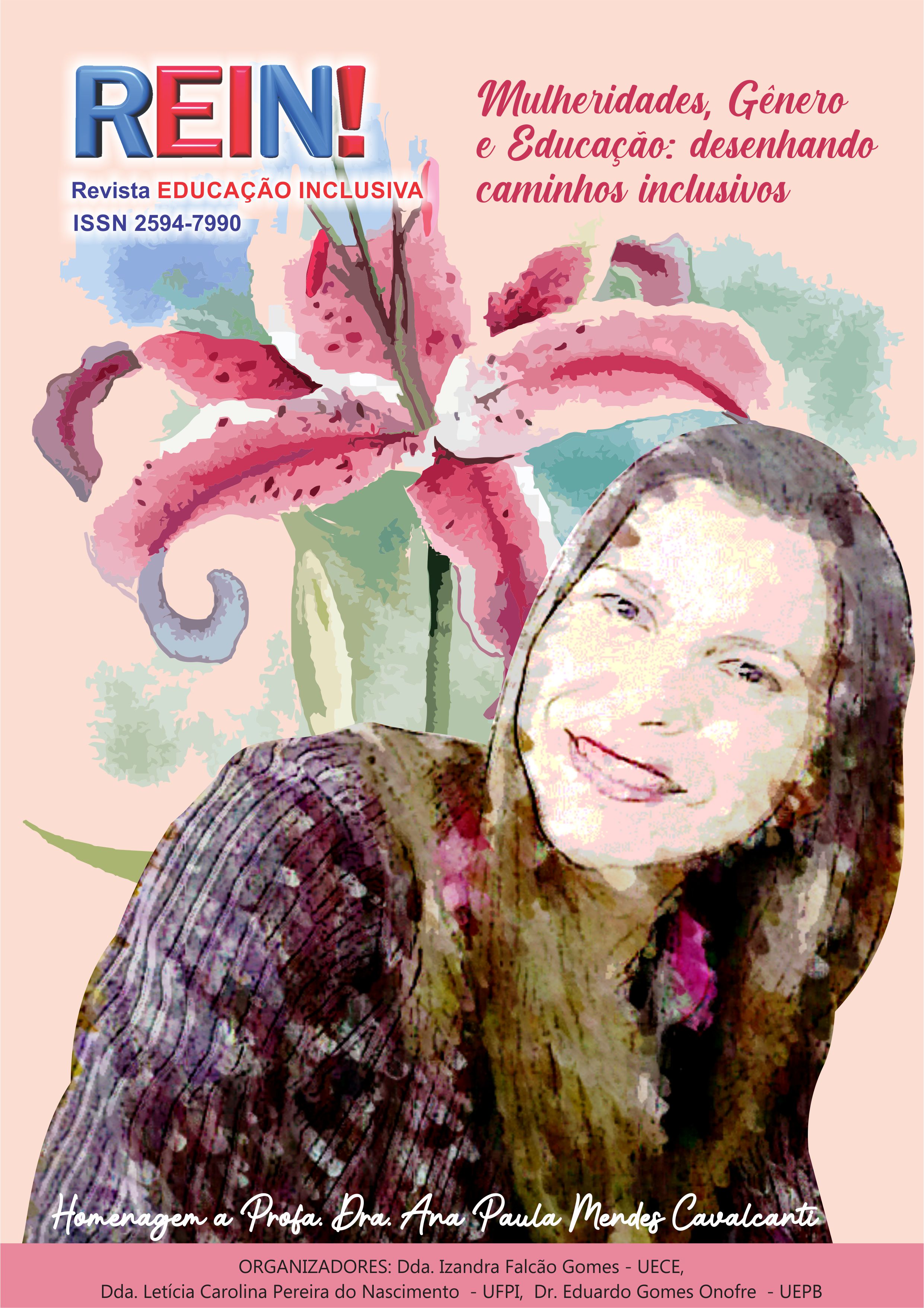SUB-REPRESENTAÇÃO FEMININA NO CURSO DE BACHARELADO EM CIÊNCIA E TECNOLOGIA DA UNIVERSIDADE FEDERAL DO RIO GRANDE DO NORTE E OS DESAFIOS PARA A INCLUSÃO DE GÊNERO NO MERCADO DE TRABALHO
Palavras-chave:
educação, gênero, inclusão, STEM, inovaçãoResumo
Este artigo tem como propósito principal compreender a sub-representação feminina em STEM no curso de Bacharelado em Ciência e Tecnologia (BC&T) da Universidade Federal do Rio Grande do Norte - UFRN. Para tanto, foi realizada uma coleta de dados em dois bancos de dados da própria instituição, o da Superintendência de Informática da UFRN – SINFO – e do Observatório da Vida do Estudante Universitário – OVEU – em um horizonte temporal compreendido entre 2014 a 2017. A pequena participação de meninas no curso levou a pesquisa a tentar compreender a dinâmica de gênero por trás deste fenômeno. A segregação horizontal ocupacional por gênero aparece com uma resposta bastante satisfatória para a pouca participação de meninas em BC&T. Diante do exposto, como tentativa de modificar esta situação, ao final deste artigo, também foi discutida e analisada uma proposta de intervenção baseada em uma política institucional desenvolvida pela Carnegie Mellon University (EUA).
Referências
BEEDE, David N. et al. Women in STEM: A gender gap to innovation. Economics and Statistics Administration Issue Brief, U.S. Department of Commerce, n. 04-11, ago. 2011.
BLICKENSTAFF, Jacob Clark. Women and science careers: leaky pipeline or gender filter? Gender and education, v. 17, n. 4, p. 369-386, 2005.
CAMPOS, Luiz Augusto; MACHADO, Carlos Augusto Mello. A cor dos eleitos: determinantes da sub-representação política dos não brancos no Brasil. Revista Brasileira de Ciência Política, v. 16, p. 121, 2015.
CECI, Stephen J.; WILLIAMS, Wendy M.; BARNETT, Susan M. Women's underrepresentation in science: sociocultural and biological considerations. Psychological bulletin, v. 135, n. 2, p. 218, 2009.
CUSTODIO, Carolina; BONINI, Patricia. Educação superior e trabalho em Santa Catarina: um enfoque nas carreiras de aplicação direta de ciência e tecnologia. Textos de Economia, v. 22, n. 1, p. 82-112, 2019.
DAVIES, Paul G. et al. Consuming images: How television commercials that elicit stereotype threat can restrain women academically and professionally. Personality and Social Psychology Bulletin, v. 28, n. 12, p. 1615-1628, 2002.
DE MELO, Hildete Pereira; THOMÉ, Débora. Mulheres e poder: histórias, ideias e indicadores. Rio de Janeiro: FGV Editora, 2018.
ELIOT, Lise. Cérebro azul ou rosa: o impacto das diferenças de gênero na educação. Porto Alegre: Penso Editora, 2013. 430 p.
ELLINGSÆTER, Anne Lise. Scandinavian welfare states and gender (de) segregation: Recent trends and processes. Economic and Industrial Democracy, v. 34, n. 3, p. 501-518, 2013.
ELLIS, Jessica; FOSDICK, Bailey K.; RASMUSSEN, Chris. Women 1.5 times more likely to leave STEM pipeline after calculus compared to men: Lack of mathematical confidence a potential culprit. Plos One, v. 11, n. 7, jul. 2016. DOI:10.1371/journal.pone.0157447
ELLINGSÆTER, Anne Lise. Scandinavian welfare states and gender (de) segregation: Recent trends and processes. Economic and Industrial Democracy, v. 34, n. 3, p. 501-518, 2013.
Frehill L.M., Abreu A., Zippel K. Gender, Science, and Occupational Sex Segregation. In: Pearson, Jr. W., Frehill L., McNeely C. (Ed.). Advancing Women in Science. Springer, Cham. p. 51-92. 2015.
GRENFELL, Michael. Pierre Bourdieu: conceitos fundamentais. Editora Vozes Limitada, 2018.
HILL, Catherine; CORBETT, Christianne; ST ROSE, Andresse. Why so few? Women in science, technology, engineering, and mathematics. Washington-DC: American Association of University Women, 2010.
KERSEY, Alyssa J.; CSUMITTA, Kelsey D.; CANTLON, Jessica F. Gender similarities in the brain during mathematics development. Science of Learning, v. 4, n. 1, p. 1-7, 2019.
LOURO, Guacira Lopes. Gênero, sexualidade e educação. Petrópolis: Vozes, 2018.
MAKAROVA, Elena; AESCHLIMANN, Belinda; HERZOG, Walter. Why is the pipeline leaking? Experiences of young women in STEM vocational education and training and their adjustment strategies. Empirical Research in Vocational Education and Training, v. 8, n. 1, p. 2, 2016.
MARGOLIS, Jane; FISHER, Allan. Unlocking the clubhouse: Women in computing. Cambridge-UK: MIT Press, 2002.
NICOLAU, Jairo Marconi. As distorções na representação dos estados na Câmara dos Deputados brasileira. Dados, Rio de Janeiro, v. 40, n. 3, 1997.
OCDE. Organização para Cooperação e Desenvolvimento Econômico. Brazil - Country Note - PISA 2018 Results. v. 1-3. 2019. 11 p.
OLINTO, Gilda. A inclusão das mulheres nas carreiras de ciência e tecnologia no Brasil. Inclusão Social, v. 5, n. 1, 2011.
PEARSE II, Richard V.; YOUNG-PEARSE, Tracy L. Lost in translational biology: Understanding sex differences to inform studies of diseases of the nervous system. Brain research, v. 1722, p. 146352, 2019.
SAINI, Angela. Inferior: How Science Got Women Wrong-and the New Research That's Rewriting the Story. Boston: Beacon Press, 2017.
SANTOS JÚNIOR, José da Silva. Aspectos Conceituais e Metodológicos sobre Evasão da Educação Superior. In: REUNIÃO NACIONAL DA ANPED, 37., 4-8 out. 2015, UFSC. Florianópolis, 2015. Disponível em: http://www.anped.org.br/biblioteca/item/aspectos-conceituais-e-metodologicos-sobre-evasao-na-educacao-superior. Acesso em: 04 abr. 2018.
SANTOS, G. G.; SILVA, L. C. A evasão na educação superior: entre debate social e objeto de pesquisa. In: SAMPAIO, S. M. R. (Org.). Observatório da vida estudantil: primeiros estudos [online]. Salvador: EDUFBA, 2011, p. 249-262.
SCHIEBINGER, Londa. O feminismo mudou a ciência. Bauru: Edusc, 2001.
SCHWARTZ, Juliana et al. Mulheres na informática: quais foram as pioneiras? Cadernos Pagu, n. 27, p. 255-278, 2006.
SPELKE, Elizabeth S. Sex differences in intrinsic aptitude for mathematics and science?: a critical review. American Psychologist, v. 60, n. 9, p. 950, 2005.
SPENCER, Steven J.; STEELE, Claude M.; QUINN, Diane M. Stereotype threat and women's math performance. Journal of experimental social psychology, v. 35, n. 1, p. 4-28, 1999.
UFRN. Bacharelado em Ciência e Tecnologia (BCT): Projeto Pedagógico de Curso. Natal: UFRN, 2017.
UFRN. COMPERVE. Dados do Observatório da Vida do Estudante Universitário – OVEU. Natal. 2020. Disponível em: http://www.comperve.ufrn.br/conteudo/observatorio/. Acesso em: 30 jan. 2020.
UFRN. SINFO. Dados da Superintendência de Informática da UFRN. Natal. 2020. Disponível em: https://info.ufrn.br/. Acesso em: 30 jan. 2020.
WOLLSTONECRAFT, Mary. Reivindicação dos direitos da mulher. São Paulo: Boitempo Editorial, 2017.









